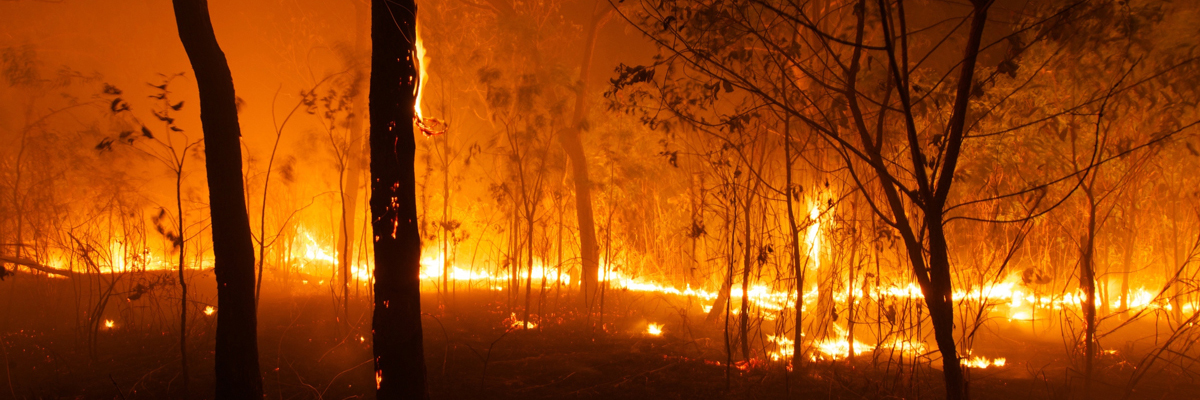Ensuring Bush Fire Protection Through Proper BAL Report Evaluation
In the realm of bush fire defense, the meticulous evaluation of Bushfire Attack Degree (BAL) reports stands as a keystone for guarding homes against the damaging effect of wildfires. With environmental factors and building attributes playing considerable roles in establishing the degree of danger, a comprehensive understanding of BAL ratings comes to be imperative.
Recognizing Bushfire Attack Degree (BAL)
In the world of bushfire defense, understanding the Bushfire Attack Degree (BAL) is critical for ensuring effective reduction strategies. BAL is a system made use of to measure the prospective risk a structure may face from a bushfire. It thinks about factors such as the type of vegetation, the incline of the land, the Fire Danger Index, and the Fire Intensity Index. Recognizing the BAL score of a property is important for home builders, owners, and policymakers to execute proper measures to protect versus bushfire hazards.

Relevance of BAL Report Evaluation
An essential element in bushfire defense preparation entails the extensive evaluation of BAL records to analyze the prospective dangers and identify suitable mitigation strategies. BAL records supply crucial details concerning the possible effect of bushfires on a building based upon numerous variables such as plant life type, range to possible fire hazards, and incline of the land. Assessing these records with accuracy is paramount in creating reliable bushfire defense actions customized to the details threat profile of a home.
Implementing Fire Protection Actions
Executing effective fire protection procedures is important for safeguarding residential or commercial properties in bushfire-prone areas. This involves clearing up flammable plant life, such as dry leaves and branches, within a particular distance of the building.
In addition, having a properly maintained and adequate water supply, such as a tank or pool, can help firefighters in their efforts to safeguard the residential property. It is necessary to have a clear emptying plan in place and to make certain that all citizens recognize with the procedures. In addition, having firefighting devices easily available, such as tubes and fire extinguishers, can assist in taking on tiny area fires before they escalate. In general, carrying out a mix of these fire security measures can considerably boost the possibilities of guarding residential properties during bushfire events.
Mitigating Dangers in Fire-Prone Locations
To fortify buildings against bushfire risks, a critical focus on mitigating dangers in fire-prone locations is vital. One vital aspect of danger reduction is maintaining defensible room around residential or commercial properties by removing combustible vegetation, making sure appropriate spacing between trees and structures, and using fire-resistant landscape design techniques.
Furthermore, building or retrofitting structures with fireproof materials and making sure correct maintenance of roofs, rain gutters, and external cladding can substantially boost the residential or commercial property's durability from this source to bushfires. Creating and exercising a bushfire emergency strategy with all residents, including discharge procedures and interaction techniques, is additionally important in mitigating threats properly. By taking on an aggressive approach to risk reduction in fire-prone locations, home proprietors can much better shield their possessions and improve general bushfire preparedness.
Ensuring Home Safety and Resilience
Making sure the safety and resilience of residential or commercial properties in fire-prone locations calls for an unwavering commitment to durable preventative steps and critical preparation. Residential or commercial property safety begins with implementing effective actions to lower fire threats.
Strength, on the various other hand, entails the capability of a property to hold up against and recoup from a bushfire. This can be boosted with the setup of cinder guards on windows and vents, guaranteeing that entrance points for cinders are reduced. Furthermore, having a well-thought-out evacuation plan and practicing it on a regular basis can dramatically increase property resilience. Teaming up with next-door neighbors and regional fire authorities can additionally boost the security and resilience of properties in fire-prone locations. By proactively dealing with these aspects, building proprietors can better secure their assets and enjoyed ones from the risk of bushfires.
Conclusion
Finally, guaranteeing bushfire protection via appropriate BAL record evaluation is crucial for understanding the level of threat posed by bushfires and executing essential fire defense steps. By minimizing risks in fire-prone locations and ensuring residential property safety and security and resilience, areas and people can better prepare for and react to bushfire occasions. It is vital to focus on fire safety and security actions to protect lives and home in these risky environments.
In the realm of bush fire protection, the precise analysis of Bushfire Assault Degree (BAL) records stands as a cornerstone for safeguarding properties against the damaging influence of wildfires (BAL Report). Understanding the BAL score of a building is crucial for residential property policymakers, home builders, and owners to execute proper steps to secure versus bushfire home dangers

BAL reports supply crucial resource info about the prospective influence of bushfires on a residential or commercial property based on different factors such as greenery kind, range to potential fire risks, and incline of the land (BAL Report). On the whole, implementing a mix of these fire defense steps can considerably raise the chances of securing buildings throughout bushfire occasions